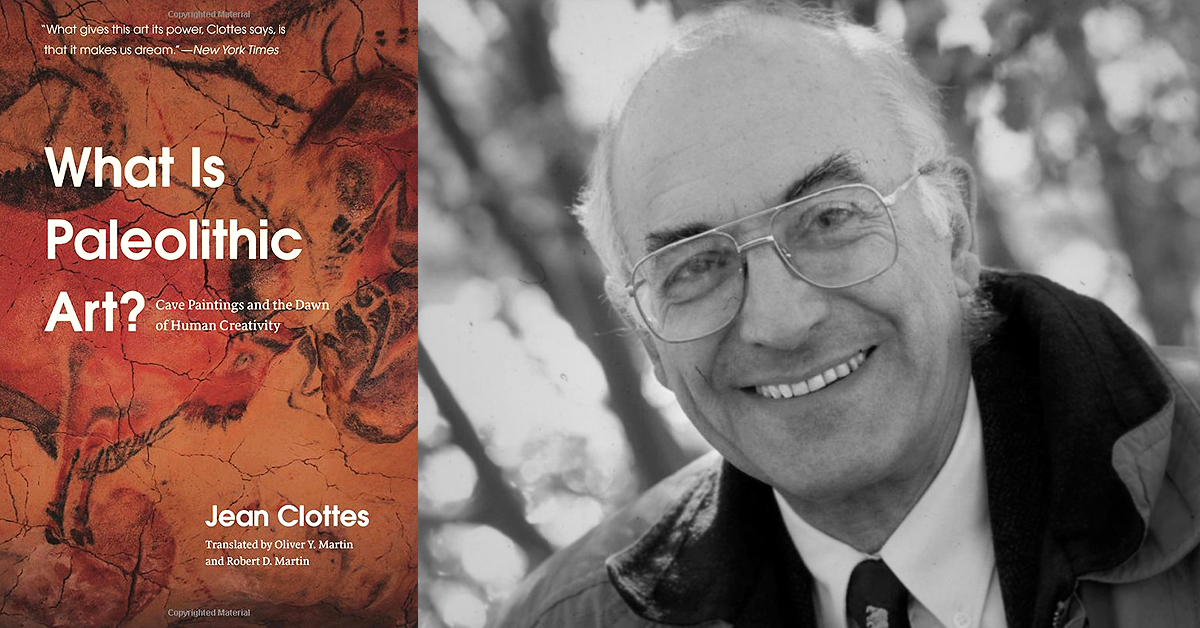


What Is Paleolithic Art? Cave Paintings and the Dawn of Human Creativity
New publication by Dr Jean Clottes, translated from the original French version Pourquoi l'art prehistorique

What Is Paleolithic Art? Cave Paintings and the Dawn of Human Creativity by#JeanClottes https://t.co/s1wckYE63i
— Bradshaw Foundation (@BradshawFND) April 22, 2016
Description: Was it a trick of the light that drew our Stone Age ancestors into caves to paint in charcoal and red hematite, to watch the heads of lions, likenesses of bison, horses, and aurochs in the reliefs of the walls, as they flickered by firelight? Or was it something deeper a creative impulse, a spiritual dawn, a shamanistic conception of the world efflorescing in the dark, dank spaces beneath the surface of the earth where the spirits were literally at hand? In this book, Jean Clottes, one of the most renowned figures in the study of cave paintings, pursues an answer to this why of Paleolithic art. While other books focus on particular sites and surveys, Clottes s work is a contemplative journey across the world, a personal reflection on how we have viewed these paintings in the past, what we learn from looking at them across geographies, and what these paintings may have meant what function they may have served for their artists. Steeped in Clottes's shamanistic theories of cave painting, 'What Is Paleolithic Art?' travels from well-known Ice Age sites like Chauvet, Altamira, and Lascaux to visits with contemporary aboriginal artists, evoking a continuum between the cave paintings of our prehistoric past and the living rock art of today. Clottes's work lifts us from the darkness of our Paleolithic origins to reveal, by firelight, how we think, why we create, why we believe, and who we are.
Review in Nature
Old masters, early cultures
Jill Cook examines archaeologist Jean Clottes's theories about what motivated Ice Age artists.
3 1 0 | N AT U R E | VO L 5 3 2 | 2 1 A P R I L 2 0 1 6
'Subtle, imaginative and brilliantly accomplished, the images of animals and humans found in caves and dated from the end of the last Ice Age, between 40,000 and 10,000 years ago, continue to astonish us. The emotions and motives that inspired them beg to be understood. In What is Paleolithic Art?, Jean Clottes, the renowned cave- and rock-art specialist, suggests some answers.
This is a thought-provoking book about complex societies that endeavoured to understand the world in their own various ways. For anyone interested in Ice Age art, Clottes's enthusiasm cannot fail to energize, inspire and provide caution to their own investigations.'
Jill Cook is acting keeper in the Department of Britain, Europe and Prehistory at the British Museum in London. Specializing in research on portable art made of bone, antler, ivory and stone, she curated the 2013 exhibition Ice Age Art: Arrival of the Modern Mind, and has written a book of the same name.
Product details:
Paperback: 214 pages
Publisher: University of Chicago Press (12 April 2016)
Language: English
ISBN-10:022626663X
ISBN-13:978-0226266633
Product Dimensions: 15.2 x 1.8 x 22.9 cm
Purchase What is Paleolithic Art? online:
https://www.amazon.co.uk/What-Paleolithic-Art-Paintings-Creativity/dp/022626663X/ref=sr_1_fkmr0_1?s=books&ie=UTF8&qid=1461317258&sr=1-1-fkmr0&keywords=What+Is+Paleolithic+Art%3F%3A+Cave+Paintings+and+the+Dawn+of+Human+Creativity+JEAN+CLOTTES+%28TRANSLATED+BY+OLIVER+Y.+MARTIN+AND+ROBERT+D.+MARTIN%29+University+of+Chicago+Press%3A+2016.
by Bradshaw Foundation
Monday 03 February 2025
by Bradshaw Foundation
Friday 09 August 2024
by Bradshaw Foundation
Wednesday 24 July 2024
by Bradshaw Foundation
Monday 30 May 2022
by Bradshaw Foundation
Wednesday 19 January 2022
by Bradshaw Foundation
Thursday 06 January 2022
by Bradshaw Foundation
Tuesday 21 March 2023
by Bradshaw Foundation
Tuesday 07 February 2023
by Bradshaw Foundation
Thursday 19 May 2022
by Bradshaw Foundation
Monday 04 December 2023
by Bradshaw Foundation
Friday 30 June 2023
by Bradshaw Foundation
Thursday 06 April 2023
by Bradshaw Foundation
Friday 14 July 2023
by Bradshaw Foundation
Monday 22 November 2021
by Bradshaw Foundation
Tuesday 12 July 2016
by Bradshaw Foundation
Tuesday 26 November 2024
by Bradshaw Foundation
Monday 27 November 2023
by Bradshaw Foundation
Friday 07 October 2022
by Bradshaw Foundation
Monday 03 February 2025
by Bradshaw Foundation
Friday 09 August 2024
by Bradshaw Foundation
Wednesday 24 July 2024
by Bradshaw Foundation
Monday 30 May 2022
by Bradshaw Foundation
Wednesday 19 January 2022
by Bradshaw Foundation
Thursday 06 January 2022
by Bradshaw Foundation
Tuesday 21 March 2023
by Bradshaw Foundation
Tuesday 07 February 2023
by Bradshaw Foundation
Thursday 19 May 2022
by Bradshaw Foundation
Monday 04 December 2023
by Bradshaw Foundation
Friday 30 June 2023
by Bradshaw Foundation
Thursday 06 April 2023
by Bradshaw Foundation
Friday 14 July 2023
by Bradshaw Foundation
Monday 22 November 2021
by Bradshaw Foundation
Tuesday 12 July 2016
by Bradshaw Foundation
Tuesday 26 November 2024
by Bradshaw Foundation
Monday 27 November 2023
by Bradshaw Foundation
Friday 07 October 2022
by Bradshaw Foundation
Tuesday 19 November 2024
by Bradshaw Foundation
Wednesday 22 May 2024
by Bradshaw Foundation
Friday 10 November 2023
Friend of the Foundation











